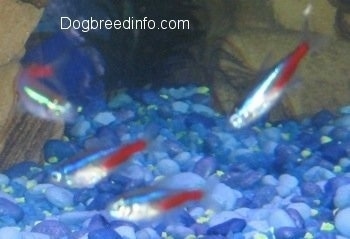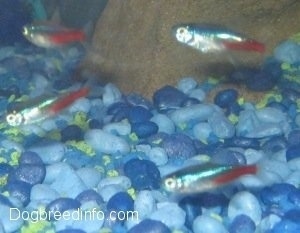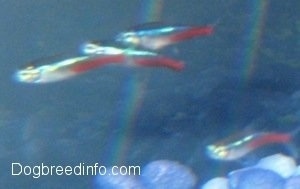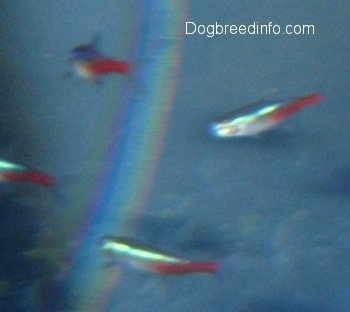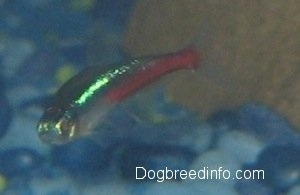
Paracheirodon innesi
Characin
Characidae
--
--
10-gallon (37 L)
Mid Level
Easy
Timid in groups of less than six. Will pine away when alone or in couples. A larger school results in more colorful fish and more outgoing personalities.
Small peaceful community fish. Since neons reach only 2 inches at best, smaller fish are more suitable as tankmates. Corydoras and loaches are good bottom feeders. Neons are more suitable for smaller tanks, around 10 or 20 gallons.
Up to 10 years, less is more common.
1.5 in. (3 cm)
Provide driftwood or rock formations. Plants are also recommended. Provide places to hide and free swimming space.
Freshwater
6.8
Softer water recommended, but can be acclimated to hard water.
75° F (24° C)
Can be fed flake food, supplemented with very small live or frozen foods. Color enhancing packaged food will help the coloration.
Difficult. Females are plumper, blue stripe is bent while male’s is straight.
Fairly difficult. Low water hardness, mosquito larvae, and low light help induce spawning. Increasing nitrates, then doing a water change can mimic rainfall, which may help induce spawning. Eggs are scattered, and adults will eat the fry, so eggs should be moved immediately. Fry will hatch within 24 hours. Fry may be fed insuforia, egg yolk and rotifers. Colors are achieved within one month.
Brazil, Colombia, Peru
The difference between the cardinal and neon tetra is slight, but easily recognizable to the trained eye. The red on the neon tetra covers about half the fish, while the red on the cardinal extends from the tail to the underside of the eye. Neon Tetra Disease is especially apparent, but not common if the fish are conditioned appropriately and are not stressed. Symptoms include paling in spots on the fish, listlessness, separation from the school, refusal to sleep and eventually death. Neon Tetra Disease is fatal, but is easily avoided with slow acclimation. Always inspect the fish before they are introduced into the tank.

